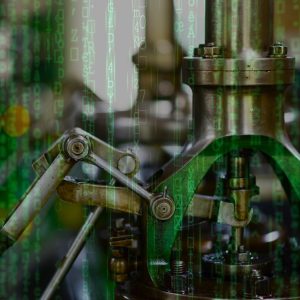MANUFACTURING TECHNOLOGY 2019
Manufacturing today is successfully meeting customer needs while still focusing on margin and revenue growth. In midst of a digital revolution, manufacturing businesses are being pressured into rethinking their processes and adopting technical solutions. From 3D printing, Cobots, to IoT, technology is advancing and multiple channels are inevitably making their way into the industry.

COBOTS
In an economy with growing demand and not enough production, Cobots are being introduced to help fill that gap. Cobots are collaborative robots that work closely with people to automate production. They are designed to be flexible, safe, and easy to operate.
Cobots use vision and sensor technology to detect humans and move at different speeds. They can be trained to do the dangerous and dirty tasks and allow people to take on higher-level or more creative functions.
3D PRINTING
3D printing is an innovative way to simplify the process between design and part production. Parts can be rapidly printed and light weight. Currently more than 60% of 3D printed parts are used for rapid prototypes. Using 3D printed prototypes helps save time and money.
3D printers can use different materials such as recycled wood. With recycled materials and 3D printers emitting less carbon dioxide, this helps reduce waste and benefits the environment.
Iot
IoT (Internet of Things) continues to evolve as the new breed of intelligence in the manufacturing industry where networks of devices are connecting OT (Operational Technology) and IT (Informational Technology).
OT systems operate and perform specific tasks by data that is inputted by humans. Today OT systems are now absorbing input data from a wide range of IT sources to monitor processes/devices and create more agile, efficient operations.
This merge introduces opportunities that have not been possible before. For example, bad products can be prevented by having the machine respond to problems as they arise and providing instant solutions. Machines reaching smart capabilities to this degree are now creating AI (Artificial Intelligence).
ERP
Through the integration of both IT and OT data, this gives businesses access and ability to detect data across all parts of the organization. ERP’s are commonly used now for storage and to connect the various data sources.
ERP’s (Enterprise Resource Planning) are advanced technical platforms that are implemented into manufacturing businesses to help manage data and automate work processes. Inventory, shipping, HR, accounting, marketing, and product planning are being connected and ERP’s are eliminating software designed for limited department functions. With an ERP, different departments each still have its own system, but they can communicate and share information easily.
Check out our social media pages on Linkedin and Facebook to keep up with our weekly updates!

